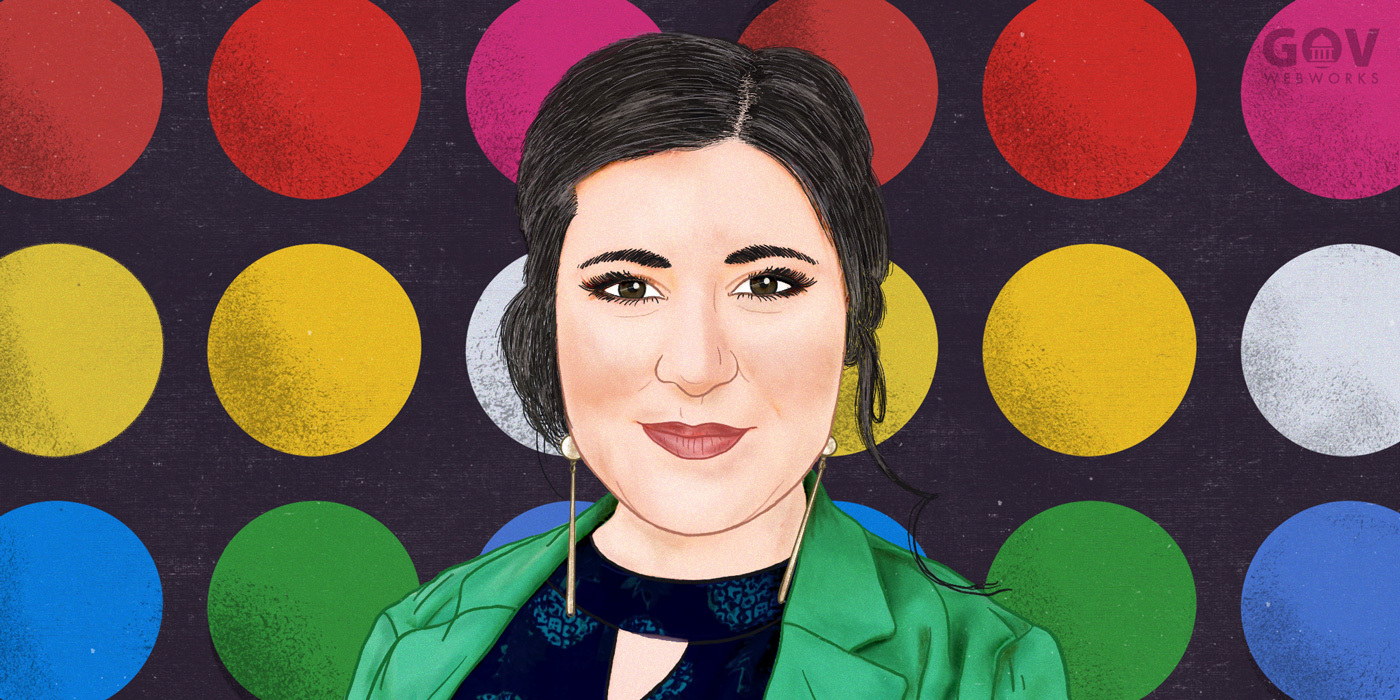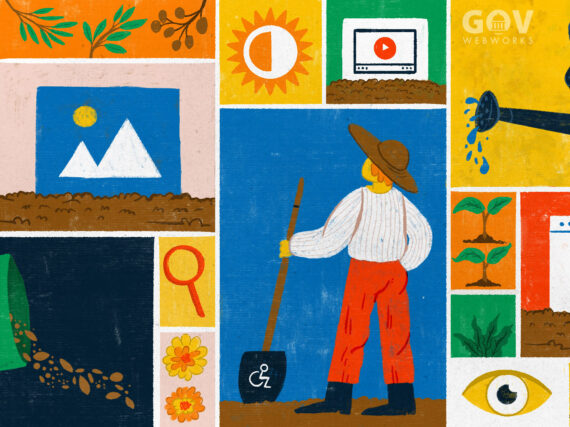“If your product solves a problem, the person using it is often in a heightened place of stress and increased frustration,” says user-experience designer Katie Swindler. “This is due to the problem that drove them to use the product in the first place.”

Katie’s book, Life and Death Design: What Life-Saving Technology Can Teach Everyday UX Designers, is the result of her research into the stress response. The head of design for Allstate Insurance’s Innovation team, and an author and presenter on UX and design topics, Katie’s goal is to minimize stress for people using technology tools.
“To gain amazing insight from Swindler’s excellent book, you don’t need to be someone who designs for people in extremis,” notes Google Conversation Designer, Jon Bloom. “You just need to be someone who designs for people under stress, which is, of course, everybody.”
For instance, while our work may not deal directly with life-and-death situations, it does involve tasks that can be quite stressful, such as applying for benefits (idalink) and college (MyHigherEd), job hunting (CareerForce), and collecting child support (Nexi).
We asked Katie how her book and research can help minimize stress in the public sector.
What can designers of government interfaces learn from designers focusing on life-and-death scenarios?
The human stress response is fundamentally the same, from a biological standpoint, no matter what is causing the stress. If someone is under a small or a large amount of stress, the same neurochemicals are released and the same fight, flight, or freeze instincts drive behaviors.
Understanding the basics of how adrenaline and cortisol affect the body and brain gives designers of any system a leg up in anticipating human behavior and designing for their needs. While they may not be flying fighter jets, many people turn to government services to solve a problem.
A problem, by its nature, causes stress levels to rise, so you should anticipate that most people have at least low levels of stress when coming to your interface. Many government services affect basic human survival needs such as housing, food, water, healthcare, childcare, transportation. The idea of losing access to any of these critical services for oneself or a loved one can trigger an extreme fight or flight reaction. Just think about how aggressive people got with each other over the toilet paper shortage at the beginning of a pandemic!
In some ways, trained pilots may be better able to maintain calm in the face of a fire fight than an untrained citizen trying to navigate a confusing public service system while on the brink of losing any of the essential services the government provides. So in that way, the stress response may be most critical when designing for government services over almost any other industry.
What inspired the book?
I’ve always longed to push my work toward creating products and services that have a meaningful impact on people’s lives. As a designer, I wanted to make sure I was prepared to create designs that would meet the challenges of products with higher stakes. This is why I started researching industries with life-and-death consequences, such as aviation, healthcare, and the military.
The book leverages the science of how human behavior and cognition changes under stress so designers can create products that better meet human needs.
Most of the book was written during the first 18 months of the pandemic, and that had a huge influence on my perspective. For instance, I wouldn’t have said Zoom or Microsoft Teams were life-and-death products before the pandemic, but I’ve since interviewed people who talked about what a critical role these technologies played in allowing physicians to work together to slow the spread of the pandemic, while maintaining strict lockdown. When I saw technology products from that lens, I realized a much broader number of products are “mission critical” than I’d originally thought.
How can designers use de-escalation techniques to minimize instinctual stress responses?
There are many ways a designer can incorporate de-escalation techniques into designs. These techniques were originally developed and documented by negotiators and law enforcement officers to help smooth communication in hostile situations. But of course, it’s not just terrorists and criminals who get angry and have a fight response in moments of stress. I’d guess we’ve all lost our temper at technology or companies when they aren’t behaving how we feel they should.
While anger is an emotional response that can affect human behavior in anti-social ways, it also serves an evolutionary purpose. Just like other negative emotions (such as fear, which is triggered when we may be in danger) anger has a purpose – it alerts humans to injustice.
If someone is angry with a product or company, it is nearly always because, from their perspective, they feel they’ve been treated unfairly.
As a designer you can create a system of de-escalation using negotiation techniques such as:
- Acknowledge the issue and address it as soon as possible
- Use a warm, respectful tone of voice
- Use plain language and visuals to avoid misunderstandings
- Give people a chance to tell their side of the story
Above all, use compassion when designing these moments. Be on the side of your user, and show you truly want to help them get a just outcome.
What’s a good example of a de-escalation technique used in a design?
Amazon’s Customer Service chat does a nice job of de-escalating with a streamlined path to resolving issues quickly and effectively. Though most people’s instinct is to pick up the phone when something goes wrong, it’s actually a poor user experience in most cases because it lacks a visual interface. Humans do better with a mixture of pictures and simple words when they are upset. Amazon starts off by showing you a list of recent purchases with images, anticipating that the vast majority of people are contacting them regarding a recent purchase. Showing a list of purchases with pictures is ideal for clear and quick communication.
The worst thing a company can do is put up blockers when someone is already upset about something going wrong.
Amazon does well in anticipating the needs of their customers and providing frictionless paths to resolve the issues quickly. Most issues can be resolved in a couple of clicks via a well-thought-out automated chat sequence, but they also have fast and seamless escalation to live human support to handle the edge-cases.
How do you approach questions that can cause stress on digital forms?
My first suggestion is to ensure that the question is truly necessary, and leave triggering questions off whenever possible. The second would be to see if it is information that can be pulled automatically from another source, such as a DMV record, so that the form can be filled out to the technical requirements without having to ask the human applicant the question directly, which can trigger drop off. Finally, if you absolutely can’t avoid including the question in the form, then include context as to why you are asking the question and how the information will and won’t be used and shared. Even if it does cause drop off, people have a right to make informed decisions about who has access to their sensitive data.
What is a startle response, and how can designers avoid it?
A startle response is made up of three factors: novelty, intensity, and rise time. Novelty means the degree that something is new and unexpected. When it comes to intensity, loudness is a big intensifier, but it might also be intensely scary or an intense physical sensation, like someone slapping you on the back. Rise time, or how sudden the change is, is often the key factor in a startle. This is why a car backfiring is startling but a jet engine revving up is not, even though the jet is much louder.
The slower the rise time of a noise, the less likely it is to cause a startle. Therefore, introducing a change more gradually is the best way to reduce the chance of startling someone and causing undue stress.
As noted in Chapter 2: Dissecting a Jump Scare, “There is a rule of thumb in design that ‘contrast equals drama.’…A designer who wants to add a dramatic flair to a party invite might use a bold black-and-white theme…To bring down the drama, designers need only to add midpoints. A black-and-white theme becomes much calmer with the introduction of several shades of gray…The effect of rise time is the underlying mechanic behind why these design tricks work.”
How can we reclaim the life-saving benefits of stress, without the negative impacts?
In the modern world there are so many stressors that we sometimes become numb to the life-saving instincts of stress. To get the most out of the stress response, my advice would be to spend time training your intuition. When we are stressed we fall back on instincts and intuition. We’re all born with instincts, but we form our intuition by the things we experience and the habits we practice repeatedly. If you’ve ever driven from one location to another and arrive to realize you have no conscious memory of driving there, you have driven entirely on intuitive action!
You can build intuition for all kinds of things. What you repeat most often will be the actions you fall back on when your mind is occupied by something stressful. If you treat people with kindness day-to-day, you will be more likely to treat them with kindness in a moment of stress.
The key is to think about how you want to behave in an emergency situation. Picture the best version of you in that moment, and then practice acting that way whenever you get the chance, even in non-life-threatening situations. Practice kindness and stepping up and doing the right thing in small ways when things aren’t as stressful, and you will find it is the behavior that comes to you automatically when the going gets rough!
What are some harmful biases that pop up in stressful situations, and how do designers overcome them?
Psychologists have identified dozens of common mental shortcuts that can lead to mistakes and poor decision making. Daniel Kahneman won the Nobel Prize in Economics for his work studying and identifying many different types of bias. (Check out his book Thinking, Fast and Slow if you’d like to learn more.)
Hands-on training is the best way to overcome harmful biases. I mentioned above that we fall back on intuitive behavior in moments of stress and that you can train your intuition through repeatedly practicing certain behaviors. Another name for intuition is bias. Intuition and bias use the same mental shortcuts and subconscious behaviors.
One type of bias is our brain’s tendency to put too much emphasis on the information we have at hand rather than note what is missing. It can happen even if the missing information is important to the decisions that we need to make in a moment of crisis. This is called Availability Bias.
Another bias that causes harm to our fellow humans is stereotyping. Stereotypes are also a type of mental shortcut, but they often lead us to overgeneralize who people are, what they are capable of, and how they might behave based on how they look. In a way, this is a type of availability bias – when we first meet someone, often the only information we have about them is how they look. Even though how someone looks is a poor prediction of how they will behave, it’s often all we have to go on. Our brains use that to match to other examples of what we know about people who look like that. If our interactions have been limited with that type of person, or we’ve consumed a lot of media where someone who looks like that person always is shown behaving a certain way, then we are more likely to make false predictions about that person.
To counteract this, we can feed the intuition experiences with a much wider array of people, and expand the sample set. Meeting and getting to know people from a wide variety of backgrounds is one of the best ways to retrain intuition and limit the harm from stereotyping. Since it’s a big world with many micro-communities, it can be helpful to supplement lived experiences with a wider array of media. Content that centers around different kinds of people in the main roles, and tells their stories from their perspectives, in their own words, can help to combat stereotyping.
When it comes to designing systems, we hope to limit the effect of harmful stereotypes held by others. One of the most effective steps is to design systems that helps the decision maker focus more on the important factors, and less on the visual factors of how someone looks.
For instance, if you are designing a form to be used during an interview process for a job, you can create a matrix that has the interviewer score the person’s performance based on the skills needed for the position. This helps the interviewer control their own bias, refocusing their brain away from the visual shortcuts and onto the important factors of how that person actually behaves.
Your book notes that existing stress data is often skewed toward white males, how do you compensate for that?
The step I took for the book was to include as many diverse voices as I could as part of my own research and when choosing which work to feature in the book. I also made sure to mention the data issue right up front and encourage my readers to think critically about the user group they design for and whether additional research may be needed to ensure that their product will perform equally well for all of their users.
Especially those who design for groups with a high likelihood for health issues (vision, mental health, etc.), I encourage them to conduct their own research with real users to ensure their systems are usable for their full intended audience.
What are some simple ways designers can adjust designs for people under stress?
In the book, I try to give lots of examples around when it might not serve to rely on the published standards of human behaviors or abilities you might find in human factors textbooks, because human performance changes under stress.
For instance, Chapter Two on the startle response notes: “Most touchscreen designers follow established best practices to ensure that their products are usable by people with a wide range of finger sizes, sometimes referred to as fat finger design. For instance, Android’s ‘Material Design Guidelines’ specify that any touch target, or clickable element, should be 7-10 millimeters square. But these general-use guidelines likely won’t go far enough toward accommodating fingers made stiff with a startle response.”
If you are designing for someone who is stressed, you’ll want to go as far as you reasonably can to increase the size of your buttons, text, and the space surrounding your controls while still keeping a reasonable amount of content on the screen.
I encourage people to think critically about the specific situation they are designing for and widen the range of the human behavior that is accommodated by the design as much as possible. This is a better way to approach design than relying on standard minimums that assume the design is being used by fully rational users in a calm, quiet environment.
What’s next for you?
I’ll be speaking on these topics at the following conferences:
- IIEX Behavior in Chicago on September 13-14, 2022
- Amuse UX Conference in Budapest on October 5-7, 2022
Learn more
- Read about the book Life & Death Design
- Buy the book
- Katie Swindler background and bio
- Find events with Katie
- Contact GovWebworks for more information about online design services







